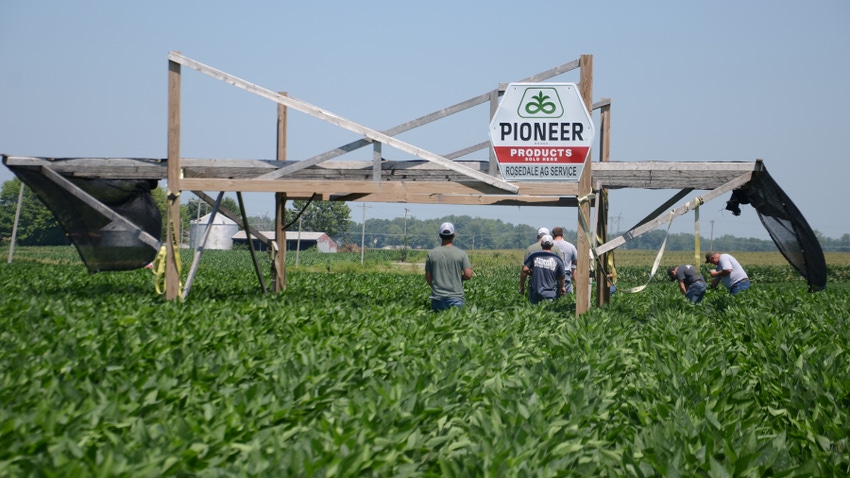
Motorists who drove by Rosedale Ag Service near Montgomery, Ind., in July 2021 saw a large, movable, wooden structure in a cornfield. In 2022, they saw the same structure in soybeans. If drivers paid close attention, they noticed the structure wasn’t always in the same place.
“We became interested in determining if cloudy days affect crop growth,” says Michael Wagler, who operates Rosedale Ag Service with his brothers Lynford and Wes, and their father, Dale. The business includes a Pioneer seed dealership.
“We put together the structure to simulate cloudy days,” he explains. “In 2021, we placed it over corn at various stages of growth. We found too much shading at key times could impact yields. Shading stress late led to plants cannibalizing themselves.”
For soybeans, the Waglers knew quantifying results wouldn’t be as easy. “Just pulling a plant here and there wouldn’t tell us much because soybeans are less consistent plant to plant than corn,” Wagler says. “So, we took 25 consecutive plants each time, and counted pods and seeds per 100 grams.”
They discovered too much shading at the wrong time affects soybeans, too.
“Stress from shading at R4 created the most pod loss per plant,” Wagler says. “Increased bean size in remaining pods didn’t fully compensate for loss of pods. To us, this reaffirms the value of spraying fungicides at R3 to R4, when more stress is likely to occur.”
In fact, Wagler explains that their goal is to minimize any type of stress at the critical R3 and R4 stages of reproduction, not just disease stress. They do their best to make sure soybean plants aren’t under stress from nutritional or environmental conditions. While they knew this was important before, results from the shading experiment made it more obvious.
In addition to noticing the effect on plants at the R4 stage, they made another discovery. They determined that shading at R7 to R8, just before maturity, extended grain fill.
Reviewing corn shading results
The Waglers’ work with corn shading trials was included in the 2022 Pioneer Agronomy Research Summary, edited by Mark Jeschke, agronomy manager. Dan Emmert, a Pioneer agronomist in southern Indiana, penned “Effects of Solar Radiation on Corn Growth and Yield.” Instead of shading soybeans, the Waglers shaded corn at different growth stages. Each stage was shaded for about 320 growing degree days.
“Reduced solar radiation had a large impact on corn yield and stalk quality,” Emmert wrote. “Specific effects differed depending upon when the reduction [in solar radiation] occurred.”
Corn was most susceptible to yield loss when reduced solar radiation occurred during pollination, Emmert notes. Cloudy and rainy days can reduce radiation, which drives photosynthesis, more than 60% compared to days with full sunlight.
While yield was compromised by shading during pollination, reduced radiation due to shading during grain fill, especially during the R4 and R5 growth stages, resulted in lower kernel weight and stalk strength, according to Emmert. Shading at this stage resulted in the cannibalization and resulting weaker stalks Wagler refers to earlier.
About the Author(s)
You May Also Like




